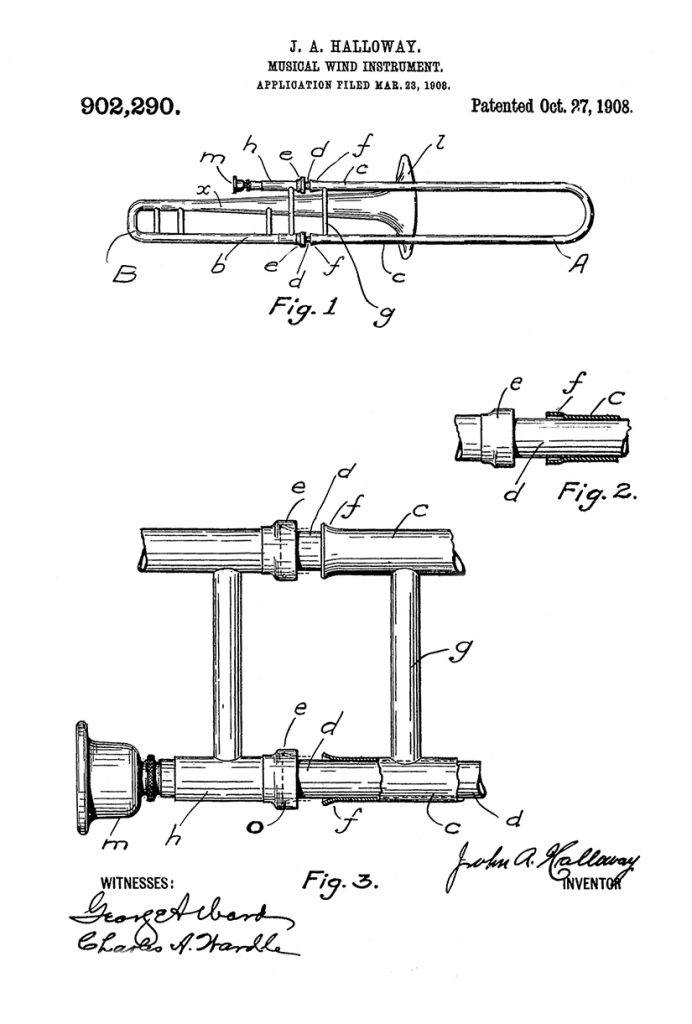The Sousa Archives’ new exhibit, From Nickeline to Electric Oil: Early Marketing and Design Revelations for America’s Trombone, opens today and is one of three new exhibits that are part of this November’s American Music Month celebration which focuses on early trombone technologies and the musical compositions and legacy of one of America’s most readily recognized composers of trombone music, Henry Fillmore. Like Fillmore such leading trombonists as Arthur Pryor, Ralph Corey, Kid Ory, and William “Willy” Cornish were extraordinary soloists at the turn of the twentieth century who catapulted their horns’ performance to center stage from the back seats of America’s concert and jazz bands where early nineteenth-century composers had them play unassuming obbligato melodies and harmonies. The instruments that these leading trombonists played and often endorsed were manufactured by such companies as C.G. Conn, Frank Holton, Henry Lehnert, and F.E. Olds. Each company’s newest metallurgical enhancements, slide oils, water keys, mouthpieces, and finishes were proudly heralded in music magazine advertisements, World Fairs exhibitions, and the live and recorded performances by these outstanding trombonists. For the aspiring amateur musicians wishing to play as well as Pryor, Corey, Ory, and Cornish these music enthusiasts almost always wanted to use the same instruments, slide oils, mouthpieces and method books that were used and promoted by these leading trombonists.
Frank Holton who played trombone along with Arthur Pryor in Sousa’s Band between 1892 and 1894 was not only a talented trombonist but also a shrewd businessman and innovative builder of trombones. He founded his company at the beginning of the twentieth century on the principle that crafting and creating useful music instruments must always enhance a player’s artistic performance. He started his music instrument company shortly after developing and marketing a new formula for slide oil that he called “Electric Oil.” Holton used his blacksmiths’ techniques that he learned in his father’s shop to develop his unique blends of copper, tin, and phosphorus which he called “phosphor bronze,” and a concoction of nickel silver, which he called “flintelite.” He produced more than five different patented designs while running his company, but many of the more significant patents were filed by other Holton designers. John Halloway’s October 27, 1908 patent was perhaps the company’s most important because his new design prevented slide oil from splashing onto the trombonist as he played his instrument. This and several other design enhancements are still used by all trombone manufacturers.
Through historical advertisements, photographs, and music instruments from the Sousa Archives’ trombone collection, this exhibit explores the many changes in American trombone design and manufacture between 1890 and 1925 to illustrate how these technological and performance enhancements were jointly shaped by the country’s leading trombonists and the music instrument companies across the country.
